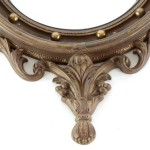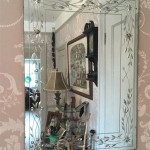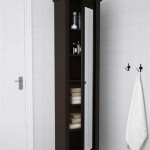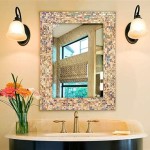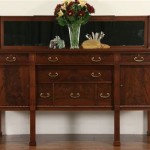How to Clean Old Mirror Glass
Antique mirrors and even more recent mirrors can accumulate grime, stains, and discoloration over time. Proper cleaning can restore their original brilliance without damaging the delicate silvering or the glass itself. This guide provides a step-by-step process to effectively clean old mirror glass.
Gathering the Necessary Supplies
Before starting the cleaning process, it is essential to gather the necessary supplies. Having everything readily available streamlines the process and prevents interruptions.
- Soft, lint-free cloths (microfiber cloths are ideal)
- Distilled water
- White vinegar
- Spray bottle
- Cotton swabs
- Isopropyl alcohol (for stubborn stains)
- Soft-bristled brush (for intricate frames)
- Rubber gloves (optional)
Preparing the Mirror and Workspace
Laying down a soft cloth or towel beneath the mirror protects both the mirror and the surface it rests on. This precaution prevents scratches and provides cushioning. If the mirror is hanging, ensure it is secure and stable before starting the cleaning process.
Gentle Dust Removal
Loose dust and debris should be removed before applying any cleaning solution. A soft, dry, lint-free cloth is ideal for this initial cleaning. Gently wipe the entire surface of the mirror, starting from the top and working downwards. This prevents dust from resettling onto already-cleaned areas.
Creating the Cleaning Solution
A mixture of distilled water and white vinegar is a gentle yet effective cleaning solution for old mirrors. Fill a spray bottle with equal parts distilled water and white vinegar. Distilled water is preferred over tap water as it does not contain minerals that can leave streaks or spots on the mirror.
Applying the Cleaning Solution
Lightly mist the mirror with the cleaning solution. Avoid saturating the mirror, as excess liquid can seep behind the glass and damage the silvering. Focus on one section at a time to ensure thorough cleaning.
Wiping and Drying
Using a clean, lint-free cloth, gently wipe the mirror in a vertical or horizontal motion, overlapping each stroke slightly. For detailed areas or ornate frames, cotton swabs can be used to reach crevices and intricate designs. Dry the mirror immediately with a clean, dry cloth to prevent streaks and water spots. This step is crucial for achieving a sparkling finish.
Dealing with Stubborn Stains
For stubborn stains or spots that resist the vinegar and water solution, isopropyl alcohol can be used sparingly. Apply a small amount of isopropyl alcohol to a cotton swab and gently dab the affected area. Avoid rubbing vigorously, as this could damage the silvering. After spot-treating with alcohol, clean the area again with the vinegar and water solution and dry thoroughly.
Cleaning Intricate Frames
Antique mirrors often feature ornate frames that require special attention. A soft-bristled brush, such as a toothbrush or artist's brush, can be used to gently remove dust and debris from the frame's crevices. Exercise caution and avoid applying excessive pressure, which could damage the frame's finish. If the frame is made of a delicate material, consult a professional for cleaning recommendations.
Regular Maintenance
Regular dusting with a soft, dry cloth helps prevent the buildup of grime and maintains the mirror’s shine. Avoid using harsh chemicals or abrasive cleaners, as these can damage the mirror's surface and silvering. Following these steps regularly will keep antique and vintage mirrors looking their best for years to come.
Protecting the Silvering
The silvering on the back of old mirrors is particularly delicate and prone to damage from moisture. Avoid spraying cleaning solutions directly onto the mirror's surface, as this can increase the risk of moisture seeping behind the glass and damaging the silvering. Instead, spray the cleaning solution onto a cloth and then gently wipe the mirror. This method minimizes the risk of moisture damage and helps preserve the mirror's reflective surface.
Addressing Black Spots
Black spots or edges on old mirrors often indicate deterioration of the silvering. Unfortunately, this type of damage is typically irreversible. While cleaning can improve the overall appearance of the mirror, it will not restore the damaged silvering. In some cases, professional restoration might be an option, but it can be a costly process.

How To Clean An Old Antique Mirror Frame Osborn Glass

25 Restoration S That Turn Old Outdated Items New Again How To Clean Mirrors Mirror Fix A

How To Clean An Antique Mirror Fantastic Cleaners Guide

Fixing Black Spots On Mirrors How To Clean Mirror Frame Diy Fix A

How To Antique A Mirror Tutorial Jenna Sue Design
3 Easy Ways To Clean A Mirror

How To Antique A Mirror Tutorial Jenna Sue Design

How To Clean Cloudy Glass And Mirrors Fab

Mirror Back Removal Kit
How To Clean Mirrors Without Streaks Microfiber Whole

